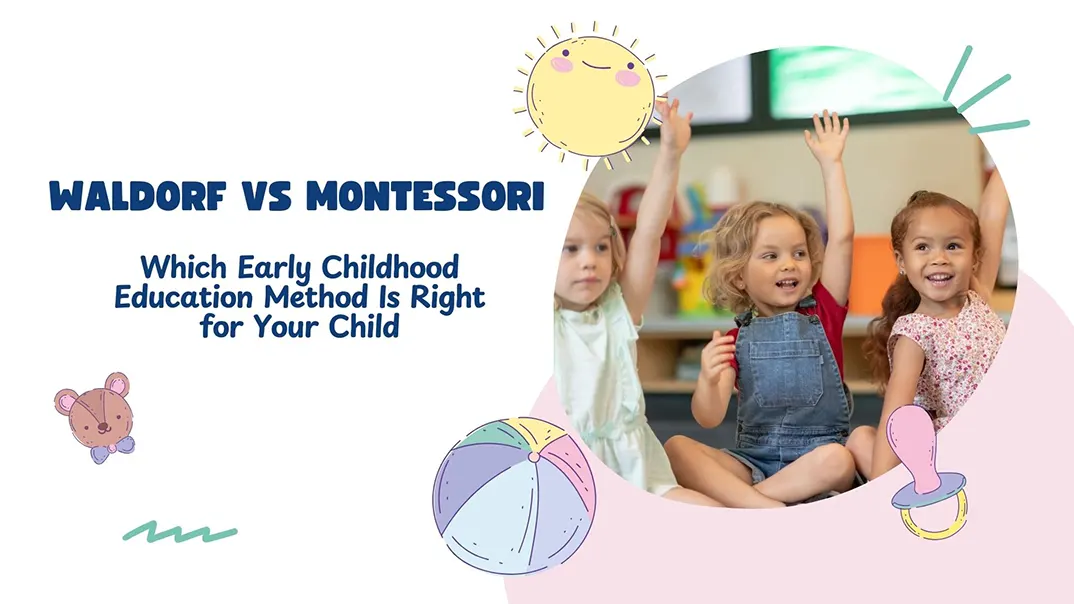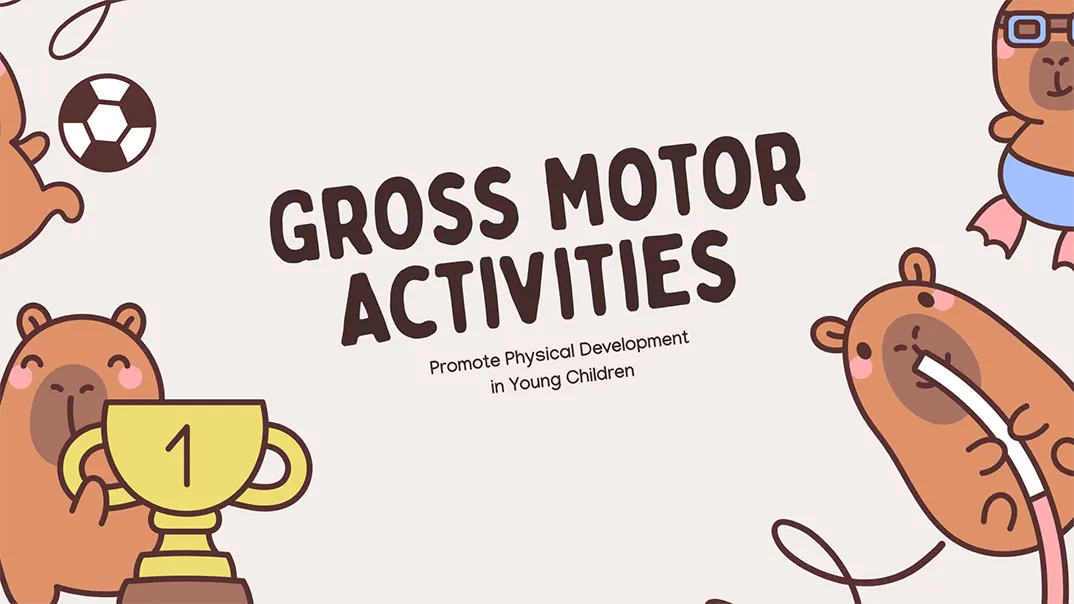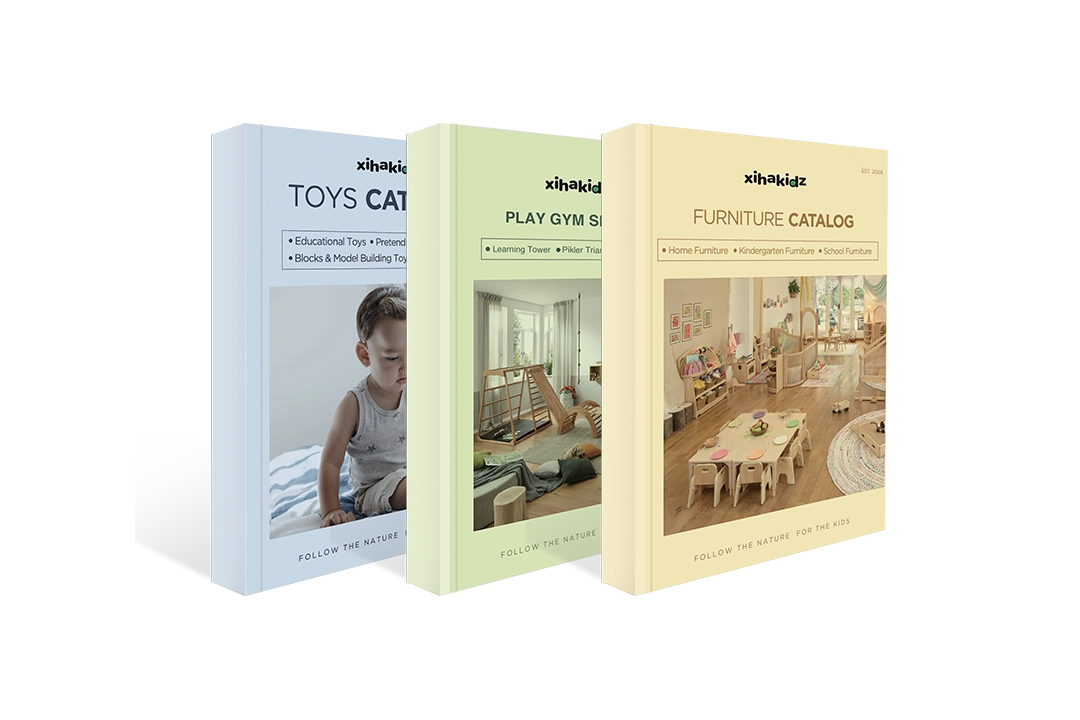Have you ever wondered which educational method best nurtures your child’s development? How do you decide between Waldorf vs Montessori educational philosophies?
Both Waldorf vs Montessori schools are renowned for their unique, child-centered learning environments, but they approach early childhood education differently. Understanding the core principles of each method can help guide you in making the best decision for your child’s growth and development.
The Waldorf vs Montessori methods are grounded in a deep respect for children’s natural developmental stages. However, their approaches to learning, classroom environments, and teacher roles differ significantly. To help you make an informed decision, let’s dive deeper into the key aspects of each approach and explore which might be the best fit for your child.
Key Principles of Waldorf Education
Waldorf education, founded by Rudolf Steiner in the early 20th century, strongly emphasizes nurturing the child’s emotional and creative development. This approach sees children as holistic beings with a deep connection between their inner and outer worlds.

Focus on Imagination and Creativity
At the heart of Waldorf education is the belief that imagination is the key to learning and personal growth. Children are encouraged to explore the world through imagination, engaging with storytelling, artistic activities, and creative play. Waldorf schools use art, music, and drama as core curriculum components, ensuring children develop intellectually and emotionally.
Importance of Rhythm, Routine, and Storytelling
Rhythm and routine play an essential role in Waldorf classrooms. Children thrive in environments where they know what to expect, and Waldorf teachers create daily rhythms that offer stability and predictability. This routine supports emotional security and helps children feel grounded in their environment.
Storytelling is another integral part of the Waldorf method. Teachers often use oral storytelling, puppetry, and dramatization to convey lessons, encouraging children to form mental images and develop strong empathy.
Role of Arts and Crafts in Child Development
In Waldorf education, the arts aren’t merely extracurricular activities but central to the child’s development. Waldorf schools incorporate handcrafts, painting, sculpture, and music into daily activities to foster creativity, motor skills, and self-expression. Children develop physical dexterity by using their hands and hearts and gaining confidence to engage with the world around them.
Key Elements of Montessori Philosophy

Montessori education, developed by Dr. Maria Montessori in the early 1900s, is grounded in the belief that children learn best when allowed to explore their interests in a prepared environment that encourages independence, self-discipline, and a love of learning.
Emphasis on Independence and Self-Directed Learning
A core principle of Montessori education is that children should actively participate in their learning. Rather than passively receiving information, children are encouraged to make choices, work at their own pace, and follow their curiosity. This approach fosters independence, critical thinking, and confidence. The goal is to help children develop a sense of ownership over their learning.
Prepared Environment and Child-Centered Materials
The Montessori classroom is carefully designed to foster self-directed learning. It features child-sized furniture, open shelves with materials that are accessible to children, and a variety of hands-on, sensory-based learning tools. The environment is arranged to promote autonomy so children can choose activities based on their interests and developmental needs.
The materials in a Montessori classroom are designed to be manipulative, concrete representations of abstract concepts, helping children learn by doing. For example, children may use wooden blocks to understand mathematical concepts or color-coded letters to learn phonics. The materials are organized to provide progression, offering increasing levels of challenge as the child’s skills develop.
Role of the Teacher as a Guide
In the Montessori method, the teacher is not a traditional instructor but a guide facilitating the learning process. Montessori educators observe the children closely, providing subtle guidance when needed but allowing the child to take the lead in their learning. The teacher’s role is to create an environment where the child feels empowered to explore and discover independently.
An Overview of Waldorf Education vs Montessori
| Aspect | Waldorf Education | Montessori Education |
| Philosophy | Holistic approach: intellectual, artistic, emotional, and spiritual development | Child-centered, focusing on independence and self-directed learning |
| Curriculum | Integrated arts and academic subjects; developmentally paced | Self-chosen activities based on individual interests and abilities |
| Role of the Teacher | Teacher as guide, storyteller, and role model | Teacher as a facilitator or “guide,” fostering independence |
| Classroom Environment | Warm, home-like with an emphasis on natural materials and imagination | Prepared environment with Montessori-specific materials for hands-on learning |
| Age Groupings | Mixed-age groups, often in three-year cycles | Mixed-age classrooms, typically 3-6 years for preschoolers |
| Play-based Learning | Strong emphasis on creative play and imaginative activities | Emphasis on practical life skills, sensorial activities, and independent work |
| Academic Focus | Delayed formal academic learning, focusing on emotional and social development first | Early introduction to reading, writing, math, and science at the child’s own pace |
| Arts and Creativity | Central to the curriculum, including storytelling, music, dance, and visual arts | Limited arts focus compared to Waldorf, but offers creative exploration through practical tasks |
| Focus on Nature | Strong connection to the natural world through nature walks and seasonal celebrations | Less emphasis on nature but a focus on real-world activities and exploration |
Educational Goals: Waldorf Education vs Montessori
The educational goals of Waldorf school vs Montessori highlight their differing approaches to child development.
Waldorf: Focusing on Imagination and Creativity
Waldorf education places a strong emphasis on imagination and creativity. Early childhood programs in Waldorf schools are designed to immerse children in a rich sensory environment where storytelling, art, and play take center stage. This approach helps develop emotional intelligence and creative thinking skills.

The overarching goal of Waldorf education is to cultivate well-rounded individuals who are intellectually capable and socially and emotionally balanced. By integrating artistic expression with academic learning, Waldorf aims to foster a lifelong love of learning.
Montessori: Encouraging Independence and Practical Skills
In contrast, Montessori education emphasizes practical skills and independence. Children are encouraged to perform everyday tasks such as pouring water, tying their shoes, or preparing snacks from an early age. These activities build self-confidence and fine motor skills while instilling a sense of responsibility.
Montessori’s educational goals extend beyond academics to include the development of critical thinking, problem-solving, and collaboration. Montessori allows children to explore their interests and fosters intrinsic motivation and a sense of ownership over their learning journey.
How Goals Align with Child Development Stages
Waldorf vs Montessori aligns their goals with the natural stages of child development. Waldorf’s stage-based approach provides age-appropriate experiences that cater to emotional and imaginative growth. At the same time, Montessori’s emphasis on hands-on learning supports the development of practical skills and cognitive abilities.
The Teacher’s Role: Waldorf vs Montessori

Waldorf Teachers as Storytellers and Inspirers
In Waldorf education, teachers are viewed as artists and mentors who inspire children through storytelling, movement, and artistic expression. They often stay with the same group of students for several years, fostering a deep bond and understanding of each child’s unique strengths and challenges. Waldorf teachers aim to create a warm, nurturing environment where children feel safe to explore and grow.
Montessori Educators as Observers and Facilitators
Montessori teachers, on the other hand, take on the role of observers and facilitators. They carefully prepare the learning environment and introduce materials but step back to allow children to work independently. Montessori educators focus on guiding rather than instructing, encouraging children to discover solutions and learn from their experiences.
Comparing Teacher-Child Dynamics: Waldorf vs Montessori
While Waldorf teachers often take a more active and directive role in shaping the learning experience, Montessori educators prioritize independence and self-directed exploration. Both approaches require skilled and attentive teachers, but their interactions with children differ significantly. Parents should consider which style aligns better with their expectations and their child’s temperament.
Learning Environments: Waldorf vs Montessori
The environments in Waldorf vs Montessori schools are purposefully designed to shape behaviors, attitudes, and skills. By understanding the differences between these two educational spaces, parents can make informed choices about the best fit for their child’s needs.
Waldorf Classrooms: Emphasis on Aesthetic and Natural Materials

Waldorf classrooms are designed to feel like home, with warm colors, natural materials, and abundant handmade toys and decorations. The environment is intentionally technology-free, promoting a sense of calm and creativity. Outdoor play and connection with nature are integral parts of the Waldorf experience.
Key Elements of Waldorf Learning Environments
Waldorf classrooms are thoughtfully curated to create a warm, imaginative, and nurturing atmosphere. The goal is to foster creativity, emotional security, and a connection to nature.
Aesthetic Appeal: Beauty and Simplicity
Waldorf environments emphasize simplicity, natural materials, and artistic touches.
- Natural Materials: Furniture, toys, and classroom decorations are often made from wood, wool, silk, and other natural substances. These materials engage the senses and create a calm, organic feel.
- Seasonal Decorations: Classrooms are adorned with seasonal crafts and colors, fostering an awareness of natural cycles.
- Soft Lighting: Warm lighting adds to the cozy, welcoming atmosphere.


Spaces for Imaginative Play
Play is a central component of Waldorf education, and classrooms are designed to inspire creativity.
- Open-Ended Toys: Items like cloth dolls, wooden blocks, and handmade puppets encourage children to create their own stories.
- Play Areas: Dedicated spaces for dramatic play, crafting, and storytelling allow children to express their imagination freely.
Integration with Nature
Nature is a key element in Waldorf education; classrooms often extend outdoors.

- Outdoor Classrooms: Activities like gardening, exploring, and seasonal celebrations occur in natural settings.
- Nature Tables: These are classroom displays that feature items collected from the outdoors, such as leaves, stones, and flowers.
Transform Your Classroom with Custom Furniture Solutions
Montessori Classrooms: Structured and Purpose-Driven Spaces
In contrast, Montessori classrooms are carefully organized to support self-directed learning. Shelves are lined with materials that are accessible to children, and each item has a specific purpose. The environment is designed to foster independence, with distinct areas for activities such as math, language, and sensory exploration.

Key Elements of Montessori Learning Environments
Montessori environments are designed to promote independence, order, and purposeful exploration. Every classroom element is carefully chosen to support a child’s self-directed learning.
A Prepared Environment
Montessori classrooms are organized to encourage children to make choices and learn independently.
- Child-Sized Design: Furniture, shelves, and tools are scaled to a child’s size, empowering them to navigate the space freely.
- Open Shelving: Materials are arranged on low shelves, making them easily accessible to children. This setup fosters autonomy and curiosity.
- Minimalist Aesthetic: Montessori environments are uncluttered and focus on functionality, avoiding overstimulation.
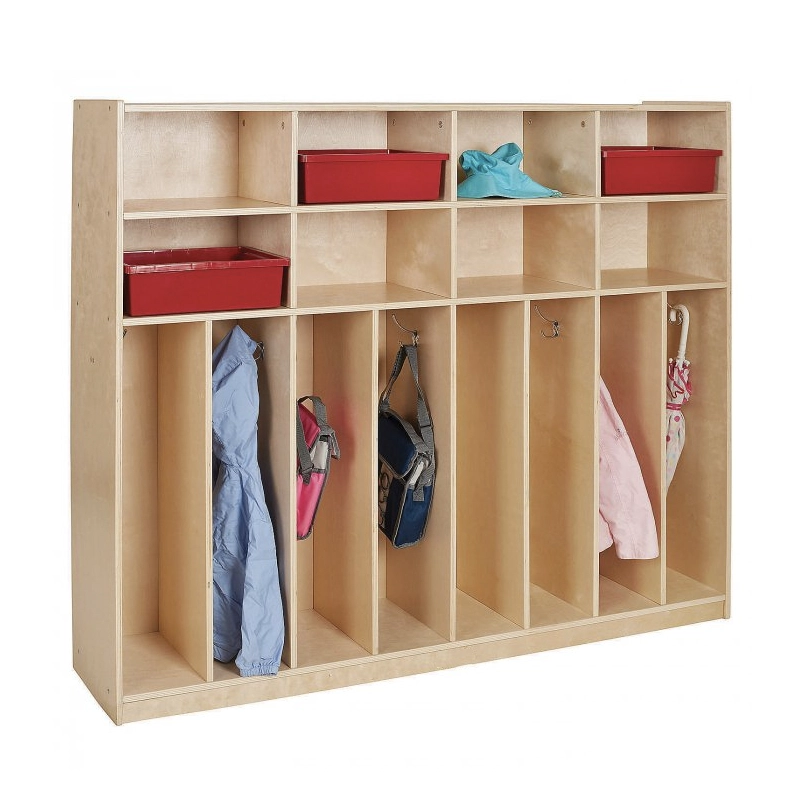
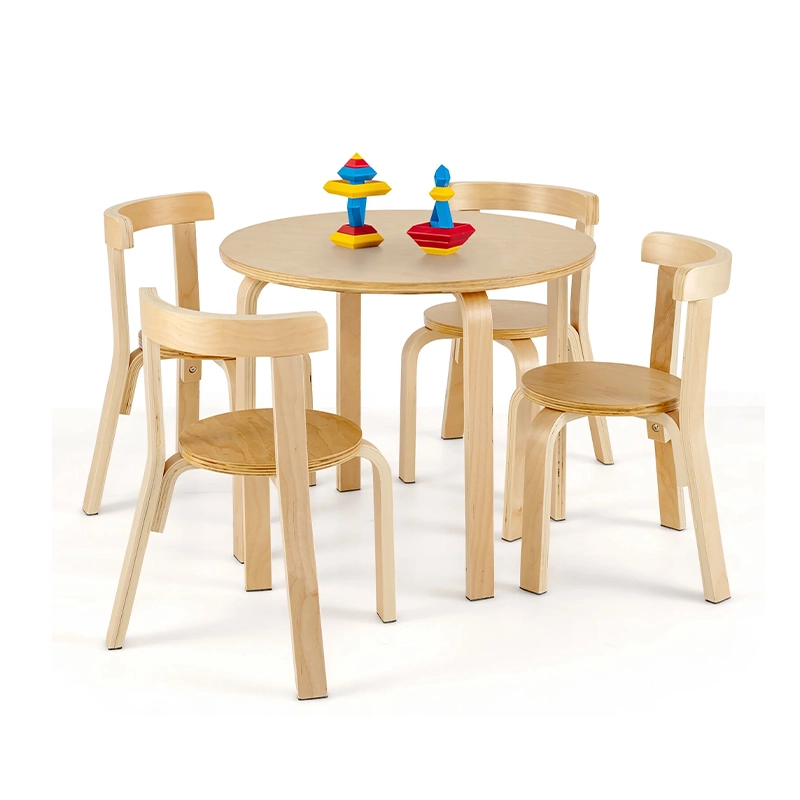
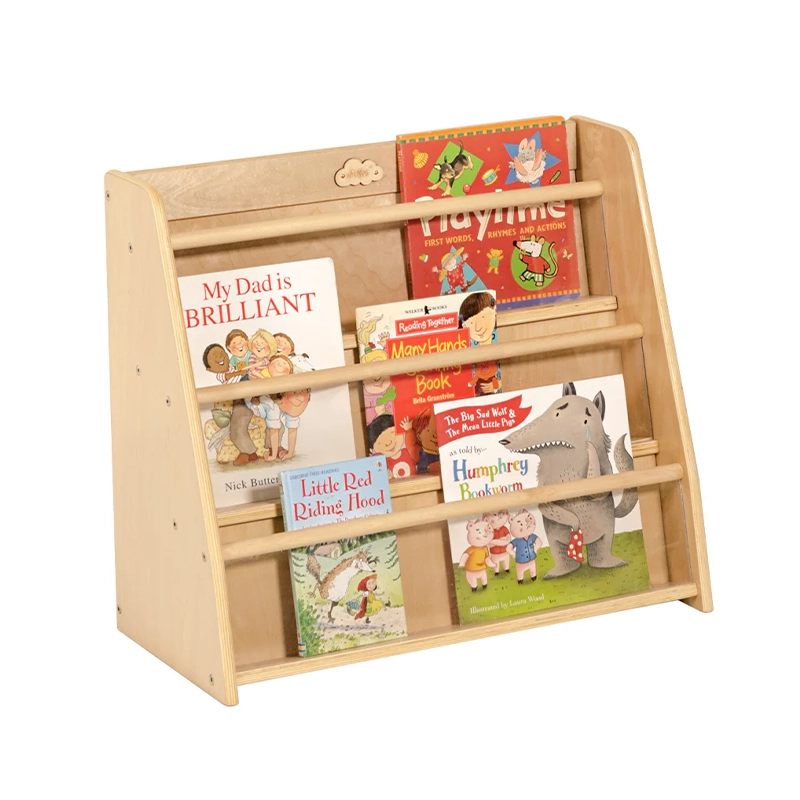
Purposeful Learning Materials
Montessori classrooms feature various hands-on materials designed to teach specific concepts.
- Practical Life Area: Includes tools for everyday activities like pouring, sweeping, and food preparation. These tasks help children build concentration and independence.
- Sensorial Materials: Items like color tablets, sound cylinders, and geometric solids encourage sensory exploration and refinement.
- Academic Tools: Specialized materials like the pink tower and moveable alphabet introduce math, language, and science concepts.
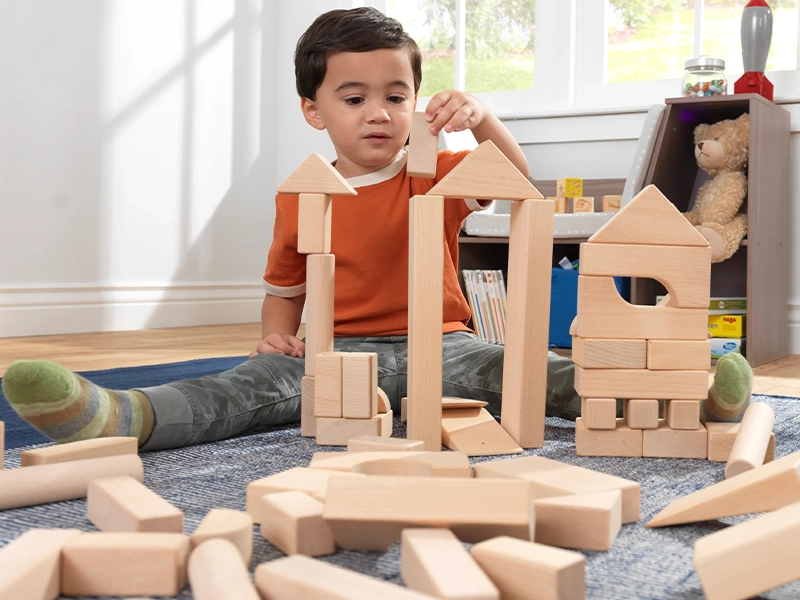
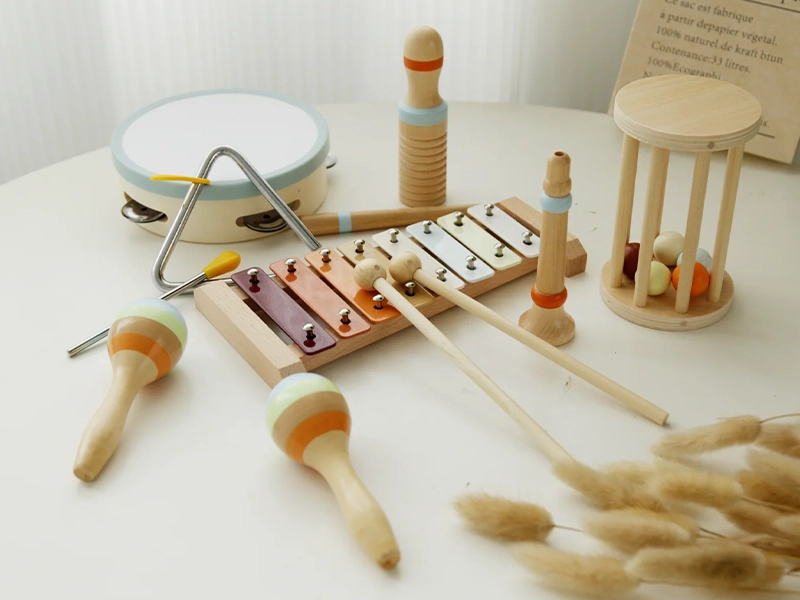

Fostering Independence
Every element of a Montessori classroom encourages children to take ownership of their learning.
- Freedom to Choose: Children can select activities that interest them, fostering intrinsic motivation.
- Defined Workspaces: Individual mats or tables provide clear task boundaries, promoting focus and responsibility.
Transform Your Classroom with Custom Furniture Solutions
Environments Shape Learning Behaviors: Waldorf vs Montessori
The physical environment in Waldorf vs Montessori shapes children’s learning behaviors. While Waldorf environments emphasize beauty and creativity, Montessori spaces prioritize order and functionality.
1. Creativity or Independence: Waldorf vs Montessori
- Waldorf: The warm, artistic environment inspires children to explore creativity, storytelling, and emotional expression. The open-ended materials and flexible spaces encourage free-form play.
- Montessori: The orderly, structured setup promotes independence and logical thinking. Materials are designed for specific purposes, helping children focus and master practical and academic skills.
2. Developing Social Skills: Waldorf vs Montessori
- Waldorf: Group activities like circle time and collaborative play nurture social and emotional bonds. The shared spaces encourage teamwork and empathy.
- Montessori: While Montessori emphasizes individual work, children learn to respect others’ space and collaborate when needed. Group activities are structured and purposeful.
3. Building a Connection with Nature: Waldorf vs Montessori
- Waldorf: Integrating nature into daily activities instills a deep appreciation for the environment. Outdoor play and seasonal themes connect children to the natural world’s rhythms.
- Montessori: Nature is also valued in Montessori, but the focus is on using natural materials in learning tools and teaching practical skills related to the environment, such as gardening.
Curriculum Design: Waldorf vs Montessori
Waldorf’s Holistic and Artistic Curriculum
The Waldorf curriculum is intentionally flexible, allowing teachers to adapt lessons to the needs and interests of their students. Subjects are often taught through storytelling, drama, and art, creating a rich and engaging learning experience. Waldorf’s holistic approach balances academic, artistic, and physical activities.
Montessori’s Individualized and Sequential Learning Path
In contrast, the Montessori curriculum is highly structured, with a clear progression of materials and activities that build upon one another. Children are free to choose their tasks within the framework of the prepared environment, but the curriculum itself is designed to guide them through specific developmental milestones.
Strengths and Challenges: Waldorf vs Montessori
Waldorf’s flexibility allows for a deeply personalized and creative experience, but it may lack the academic rigor some parents seek. Montessori’s structured approach ensures consistency and progress but may feel restrictive to children who thrive in less structured environments. Parents should weigh these factors when deciding which curriculum aligns with their child’s needs.
Role of Play in Child Development: Waldorf vs Montessori

Waldorf’s Perspective on Imaginative Play
Play is considered a sacred and essential part of childhood in Waldorf education. Imaginative play is encouraged through open-ended toys, storytelling, and role-playing activities that nurture creativity and social skills.
Montessori’s Approach to Hands-On Exploration
Montessori emphasizes hands-on exploration and purposeful activities. Children use materials designed to teach specific concepts, such as math, language, or sensory development. While less emphasis is on imaginative play, Montessori materials foster problem-solving and concentration.
Balancing Creativity and Practicality
Both methods value play and exploration but approach them differently. Waldorf leans towards nurturing creativity and imagination, while Montessori focuses on practicality and skill-building. Striking the right balance depends on the child’s unique learning style.
Parent Involvement: Partnering in Education
The Role of Parents in Waldorf Communities
Waldorf schools often emphasize community and parental involvement. Parents are encouraged to participate in festivals, workshops, and classroom activities, creating a strong connection between home and school.
How Montessori Encourages Parent Collaboration
Montessori values parental involvement but focuses more on creating a consistent learning environment between school and home. Parents are often given guidance on how to incorporate Montessori principles into daily routines.
Practical Tips for Parents Supporting Either Approach
Regardless of the method, parents can support their child’s education by staying informed, communicating with teachers, and creating a nurturing environment at home. Understanding the philosophy behind each method can help parents reinforce their child’s learning and growth.
Making the Right Choice for Your Child
Factors to Consider: Learning Style, Personality, and Family Values
Choosing between Waldorf and Montessori requires careful consideration of a child’s learning style, personality, and family values. For example, children who thrive in creative and imaginative settings may excel in Waldorf, while those who prefer structure and independence may benefit from Montessori.
Matching Educational Methods to Individual Needs
No single method is universally better—the key is finding the approach that aligns with a child’s unique needs and strengths. Parents should visit schools, observe classrooms, and speak with teachers to make an informed decision.
Questions to Ask Schools When Deciding
When evaluating schools, parents should ask questions about curriculum, teacher training, classroom environment, and parental involvement. Understanding these details can help parents determine whether Waldorf or Montessori is the right fit.
Conclusion: Finding Harmony Between Two Visions
While Waldorf and Montessori have distinct philosophies, elements of both can be integrated to create a balanced educational experience. For example, families might combine Waldorf’s emphasis on creativity with Montessori’s focus on independence.
Parents can draw inspiration from both methods to design a personalized education journey that meets their child’s needs. This might involve incorporating Montessori principles at home while embracing Waldorf’s artistic and imaginative activities.
Ultimately, the best educational method nurtures a child’s potential and fosters a love of learning. By understanding the strengths and philosophies of Waldorf and Montessori, parents can make informed decisions that set their child on a path to success and fulfillment.
Discover Our Full Range of Products
Get access to our comprehensive catalog featuring top-quality furniture and play equipment for kindergartens and schools.

